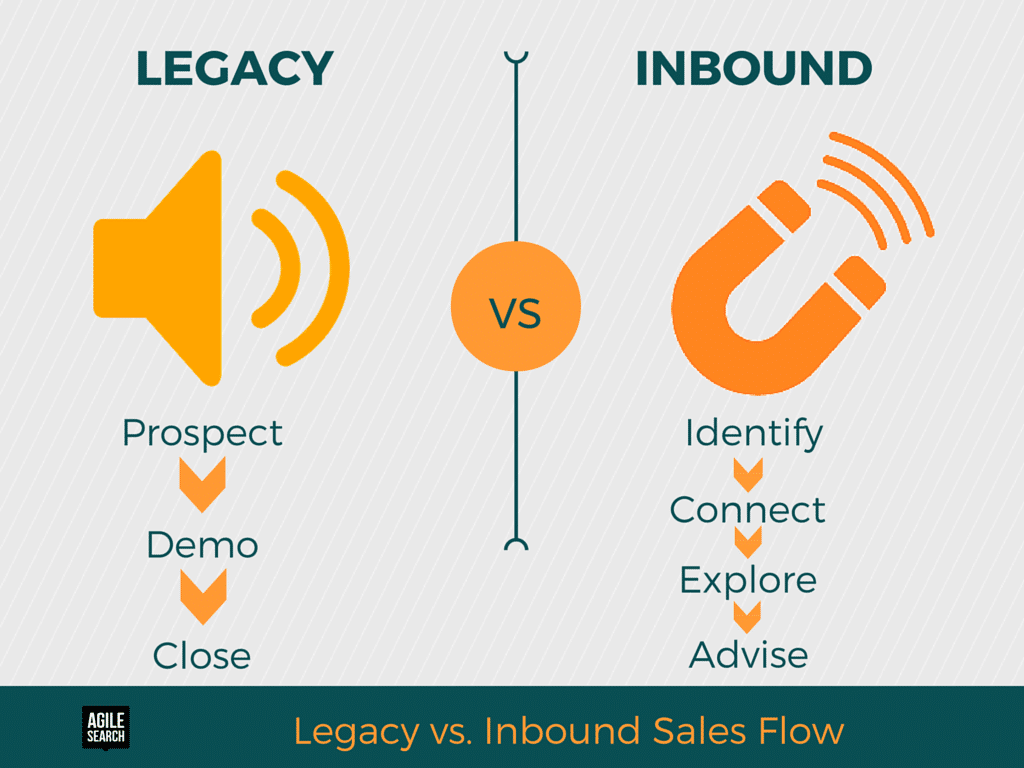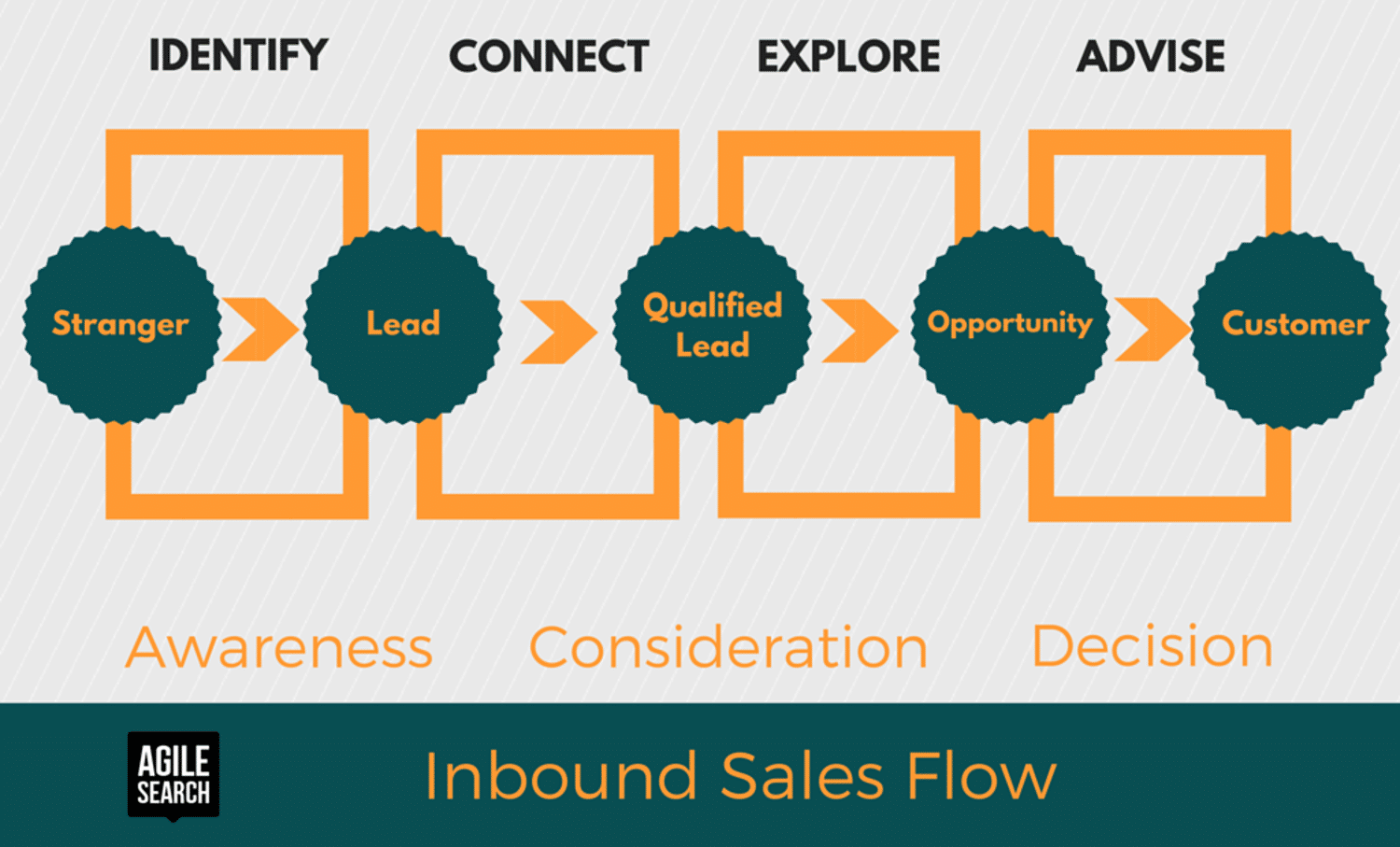Inbound sales term comes from inbound marketing and especially the change of how buying behaviour has changed in the past years.
Mainly due to arrival of internet and social media where we have unlimited knowledge at our disposal.
The power in the buying process has moved from the salesperson to the buyer. Inbound sales goal is to transform the sales process to match the new buying behavior. It comes down to personalizing the entire sales process for the buyer’s context with carefully designed steps. To get the basics of Inbound Marketing I’d like to forward you to our blog posts which explains it in couple of minutes. (TL:DR – What is Inbound Marketing)
Legacy Sales Process

In the legacy sales model you go through three simple stages to have the buyer make a decision based on those. They are first a prospect you have found in your search and you contact them to do a demo. Based on the demo they decide if they want to buy or not. This worked for a long time when people didn’t have access to the amount of information internet is providing.
Adding Value in Sales
If as a salesperson you aren’t able to provide more value to a buyer than what they could have found online themselves then the buyer has no reason to be in contact with you. Buyer goes through three different stages during the buyer’s journey and you should leverage these stages accordingly with specifically tailored message for each lead. (Buyer’s journey – blgo link)
In the awareness stage, buyer is identifying a challenge they are having or an opportunity the’d like to take advantage off.
In the consideration stage, they have a clear goal or a challenge they want to address.
In the decision stage, buyers have decided on a solution and what best fits their needs. Now they are deciding with what product or company they will go with.
Inbound Sales Process

Main goal of inbound sales teams is to build a process that supports the buyer on the buyer journey. This results that salesperson and buyer feel that they work together rather than be at odds.
Identify
Inbound salesperson prioritize buyers that are active and portray interest towards their company. Heavy use of tools and different clues will help you to identify the buyers that are active.
Connect
Establishing a connection with the buyer with a personalized message that fits their current stage in the buyer’s journey. Aim is to develop trust by showing interested in helping them to make the best possible decision.
Explore
Salesperson transitions into exploratory mode when buyer has showed interest and leverages it to develop trust. Figuring out their goals on a deeper level through a conversation.
Advise
Tailoring and delivering a presentation to fit into what the buyer is looking for. Using all the information you have gathered about them during explore stage.
So ends our blog post on introduction to inbound sales. If you have any questions don’t hesitate to contact us or a drop a comment below! We have collected 150 Inbound Marketing Statistics to help you gather proof on why transform from outbound sales and/or marketing to inbound methods.Inbound sales term comes from inbound marketing and especially the change of how buying behaviour has changed in the past years.
Mainly due to arrival of internet and social media where we have unlimited knowledge at our disposal.
The power in the buying process has moved from the salesperson to the buyer. Inbound sales goal is to transform the sales process to match the new buying behavior.